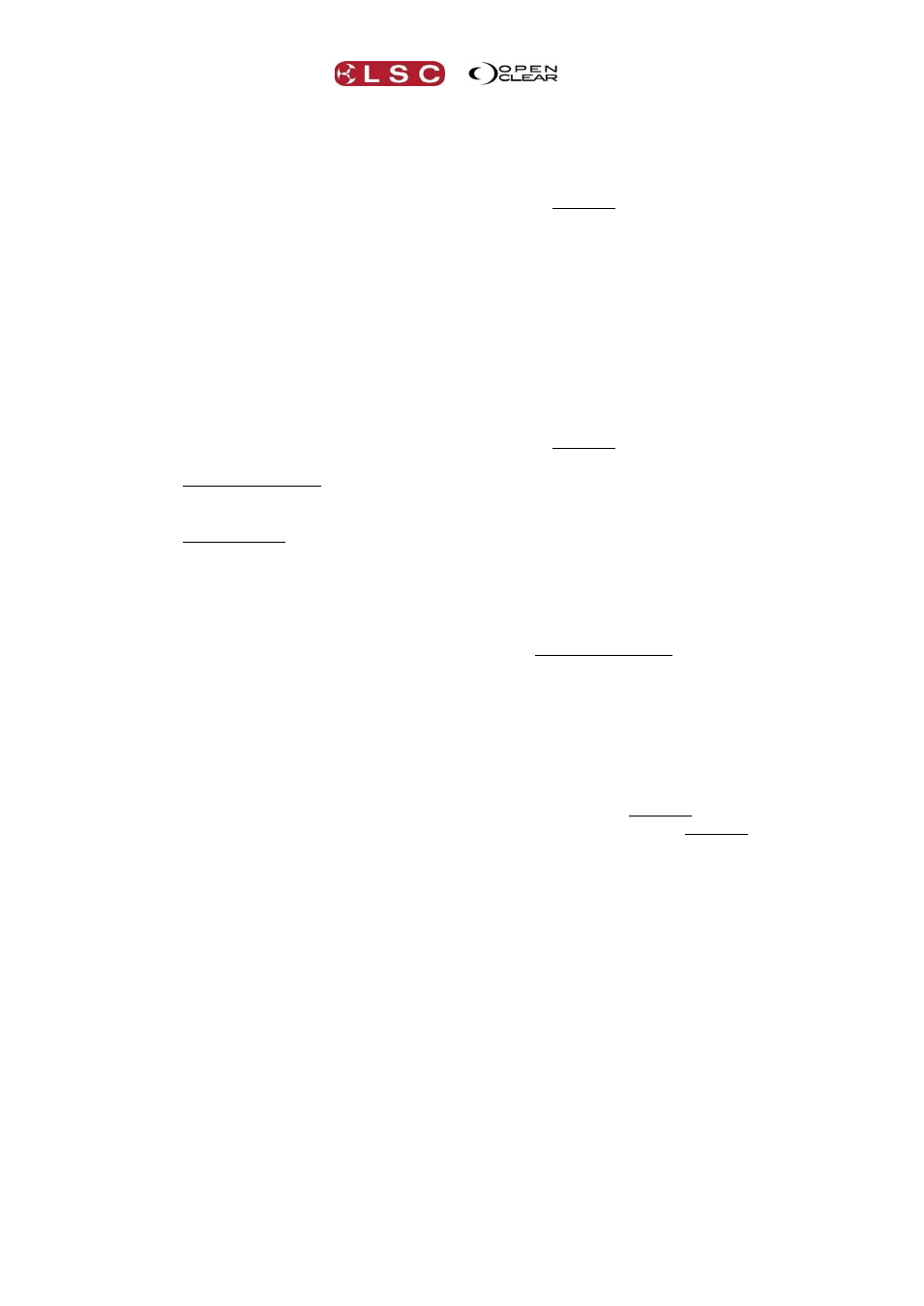1 automatic entry of events (learn), 2 manual entry of events, 3 editing events – LSC Lighting CLARITY LX Series v.1 User Manual
Page 226: 4 managing playlists, 5 timecode playback, 6 recede

Timelines
Clarity
Operator Manual
Page 216
33.9.1 Automatic Entry of Events (Learn)
If Timecode is being received by Clarity, events can be automatically entered into a Playlist as
you play them back in real time. When you play a cue, a new event is automatically created in
the selected playlist.
To create a new Playlist, click on the symbol in the Playlists pane.
At the bottom of the Playlist Contents pane, click Learn. The Learn button turns green.
If Clarity is receiving Timecode, the box beside the Learn button will flash red and
automatic entry of events is possible.
Playback your show using any of Clarity’s playbacks. Each time a cue is played back a
new event is automatically created containing the cue-list, cue number and the current
Timecode when the cue was played.
When finished click Learn to de-select it.
If necessary you can edit any of the events and their times as described below.
33.9.2 Manual Entry of Events
You can manually enter the events in a Playlist as a cue-list, cue number and the timecode
reading when the cue is to be played.
To create a new Playlist, click on the symbol in the Playlists pane.
Clicking on the new Playlist that was created will enable the “Playlist Contents” pane.
In the Playlists Contents pane, clicking on symbol will add a new Event. This event
has no details as yet.
Clicking on that Event will enable the “Event Details” pane.
In the Event Details pane, clicking on the Cue-list box allows you to select a cue-list
(that you have previously recorded) then clicking on the Cue box allows you to select a
cue in that cue-list. See also “Recede” below.
The time for an event can be set by clicking in the time boxes and either entering a
number or using the mouse wheel. Timecode is entered in Hours, Minutes, Seconds and
Frames. Press [Tab] to advance to the next time field.
To add another event, click on the symbol in the Playlists Contents pane.
Clicking on that Event allows you to select a Cue-list, Cue and Time for that event.
33.9.3 Editing Events
The contents of any event including its Timecode value can be edited by clicking on the its Playlist
then clicking on the event and altering the Event Details as described in the manual entry of
events above.
33.9.4 Managing Playlists
Multiple Playlists can be created by clicking on symbol in the Playlists pane.
To delete a Playlist, click on the Playlist then click the ▬ symbol in the Playlists pane.
To delete an Event in a Playlist, click on the Playlist then click on the Event in the
Playlist Contents pane, then click the ▬ symbol.
Deleted Playlists and Events can undone or redone by clicking Undo Del Event or Redo
Del Event.
Playlist names can be edited by double clicking on them.
33.9.5 Timecode Playback
To enable Timecode playback, select Show/Timecode/Configuration…..
Tick to enable the type of Time Code (MIDI or SMPTE) that is connected to Clarity.
Tick the “Global Enable” box.
To enable a Playlist to be controlled by Timecode, tick that Playlists “Enable” box.
If Global Enable is not ticked, no Timecode playback is possible. A Playlist needs both its own
enable and the global enable ticked for it to be played back by Timecode.
When Clarity is receiving Timecode, any “enabled” Playlist will play each event when the time in
the Event Details box matches the Timecode being received by Clarity. See also “Recede”
below.
33.9.6 Recede
There are two Recede options, Global Recede and Event Recede and they work together. If
Global Recede is not ticked, no Event Recedes will work. An event needs both its own recede
and the global recede enabled for it to recede.
